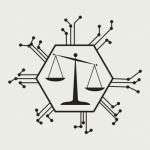Our data has become the oil that powers AI — but at what cost? As we move toward 2026, Europe’s decade-old privacy regime faces its biggest test yet. The GDPR once made the EU the gold standard of data protection, but now, with AI models devouring internet data by the terabyte, regulators are struggling to keep up. From Italy’s temporary ban on ChatGPT to record-breaking fines against Meta, one thing is clear: privacy law is entering its next evolutionary phase.
The Status Quo: Great Laws, Bigger Loopholes
Today’s data privacy landscape is defined by both remarkable progress and pressing challenges. On one hand, comprehensive privacy laws have proliferated across the globe, largely inspired by the EU’s General Data Protection Regulation (GDPR). Since taking effect in 2018, the GDPR’s impact has been unprecedented – sparking similar legislation from California to India to Brazil. Privacy regulators have wielded these laws to hold tech giants accountable, issuing eye-popping fines and orders. A striking example came in 2023, when Ireland’s Data Protection Commissioner fined Meta (Facebook’s parent) a record €1.2 billion for continuing to send Europeans’ data to the US despite an EU court ban. This enforcement – the largest in GDPR history – underscored Europe’s resolve to rein in data transfers that expose EU citizens to foreign surveillance. It also highlighted a transatlantic rift: the fine was prompted by U.S. laws on government snooping, which the EU’s top court found incompatible with EU privacy rights. In Germany, too, privacy is taken very seriously – rooted in constitutional values and enforced by both federal and state authorities. German regulators have not shied from action, contributing to major EU-wide cases and pushing for strict compliance (for instance, German authorities have warned against using certain cloud services after court rulings invalidated EU–US data agreements).
Yet on the other hand, technological leaps have outpaced some of these legal frameworks. The explosion of AI and “big data” in recent years poses novel privacy dilemmas that current laws only partially address. Take large language models (LLMs) like OpenAI’s ChatGPT – trained on massive datasets scraped from the internet. In 2023, Italy’s privacy watchdog made global headlines by temporarily banning ChatGPT outright, accusing it of having “an absence of any legal basis that justifies the massive collection and storage of personal data” for training its AI. Italy’s regulators demanded OpenAI stop processing Italians’ data and comply with GDPR rules on transparency and age verification, making Italy the first Western country to take such action against a generative AI. OpenAI quickly responded, pledging measures to appease the authorities and restore service. This clash revealed a gap: cutting-edge AI systems were ingesting personal information on a massive scale, but privacy laws hadn’t explicitly anticipated this scenario. Around the world, lawmakers began grappling with how to govern AI’s appetite for data. By late 2024, the EU was finalizing its AI Act, a landmark law slated to impose rules on AI by category of risk (with generative models likely facing transparency and data governance requirements). Other regions took note – for example, Colorado passed a law on “high-risk AI systems” set to take effect in 2026, and discussions of AI oversight ramped up in the US, China, and elsewhere. In short, the status quo in 2025 is a mixed picture: strong privacy laws exist and are enforced as never before, but technological change (AI, IoT, ubiquitous data collection) keeps raising the bar for what “privacy protection” truly means.

Looking Ahead: Data Privacy in 2026
What might data privacy look like in 2026? In my view, we’re likely to see an ongoing tug-of-war between innovation and regulation. I expect both new laws and updates to existing frameworks to emerge. For instance, 2026 will mark the 10-year anniversary of the GDPR, and I anticipate that the EU’s planned “Omnibus” reform package will begin to reshape the data protection landscape. From what I’ve seen, these reforms could help simplify compliance for smaller and mid-sized companies while aiming to fix fragmented enforcement and adapt the rules to better fit technologies like AI.
One major certainty: the EU AI Act will take full effect in 2026. This regulation introduces binding legal requirements for AI systems, especially those classified as “high-risk.” Providers will be obliged to implement measures around data governance, transparency, and risk management. In my view, this will significantly raise the bar for how AI is developed and deployed in Europe. I personally believe we’ll also see stronger privacy safeguards emerge alongside the AI Act – for instance, mechanisms that allow individuals to opt out of having their personal data used in AI training. The European Data Protection Board has already suggested such rights should be unconditional from the outset. I expect that by 2026, principles like these will start to find their way into concrete enforcement or complementary reforms, giving people more meaningful control over their data.
Looking beyond Europe, I believe other jurisdictions will also play an increasingly important role in shaping the global privacy landscape. Germany, in my view, will likely continue to act as a strong privacy advocate within the EU. There are early signs that reforms could be on the horizon to streamline the country’s fragmented system of state-level data protection authorities—a move I would personally welcome, as it could lead to more consistent enforcement.
In the United States, we’re witnessing a steadily growing patchwork of state-level privacy laws. Although a unified federal privacy law still seems out of reach, by 2026, it’s expected that around 20 states—covering about half the U.S. population—will be protected by comprehensive data protection statutes. California’s CPRA is already in force, and other states like Colorado and Virginia are rolling out their own versions. I expect that this will gradually push U.S. companies closer to GDPR-like obligations, at least at the state level, particularly around user rights like access, deletion, and data portability. In parallel, I anticipate that regulators such as the FTC will intensify their scrutiny of data security practices and fairness in digital services, with sector-specific rules (e.g. for health data, children’s data, or AI systems) potentially emerging along the way.
China presents a particularly complex case. On paper, its Personal Information Protection Law (PIPL), enacted in 2021, is one of the most stringent in the world—drawing heavily from GDPR in terms of consent, user rights, and data minimization. But in contrast to the EU, the PIPL does not allow companies to rely on “legitimate interests” as a justification for processing, and it requires separate consent for specific actions like cross-border transfers. We’ve already seen tough enforcement, such as the $1.2 billion fine against ride-hailing giant Didi. However, I expect that by 2026 we’ll see how much real enforcement power PIPL has in practice—especially given China’s broader surveillance framework, which may influence how personal privacy and state access are balanced.
Finally, I expect more steps toward global convergence—or at least better interoperability—by 2026. Countries like India and Brazil are in the process of updating their laws, and new international arrangements for cross-border data flows are being negotiated, such as the EU–U.S. Data Privacy Framework that aims to replace the invalidated Privacy Shield. Whether these efforts will withstand legal challenges (which privacy advocates are already gearing up for) remains to be seen, but they will likely play a key role in shaping the international privacy regime in the years to come.
Why Privacy Is Important
Amid all these changes, it’s worth recalling why privacy is such a critical value in the first place. Privacy isn’t just about hiding secrets – it’s about protecting our personal autonomy, dignity, and freedom in a data-driven world. In the EU, privacy and data protection are considered fundamental human rights, enshrined in law to safeguard individuals from undue surveillance or misuse of their personal information. The logic is simple: without privacy, people may self-censor and lose freedom of expression, and power imbalances grow when governments or corporations know everything about us. Real-world events over the past decade underscore these stakes. The 2018 Cambridge Analytica scandal, for example, revealed how millions of Facebook profiles were harvested (without clear consent) to micro-target political propaganda – arguably swaying elections and undermining democracy. It was a wake-up call that personal data, if exploited, can be weaponized against the very individuals it pertains to. Likewise, massive data breaches have hit hospitals, banks, and even dating sites, leading to identity theft, financial fraud, and intimate details being exposed. The harm to people’s lives – from reputational damage to safety risks – can be enormous when privacy fails.
Privacy is also the cornerstone of trust in the digital economy. If users know their data will be respected, they are more likely to embrace new technologies and online services. This is particularly true for AI and machine learning: people will only welcome AI assistants or smart devices into their homes and workplaces if they feel confident those tools aren’t spying on them or leaking their information. For instance, consider healthcare AI systems – a brilliant innovation for diagnosing disease – which will fail to gain adoption if patients fear their health data could be sold or misused. By ensuring strong privacy protections, we create space for innovation that people can comfortably use. In short, privacy is important not to impede progress, but to enable sustainable progress – it provides the social license for companies to use data in beneficial ways. It’s about drawing ethical boundaries so that technology serves us rather than exploits us. As AI expert Dr. Mireille Hildebrandt once suggested, privacy preserves the “incomputable self”, shielding the human identity from being fully reduced to data points and algorithmic predictions. In an age where AI can infer our moods, habits, and vulnerabilities from data, privacy is what preserves our human agency.
The Consent Dilemma: From Notice-and-Choice to Meaningful Control
At the core of modern privacy regulations is the principle of consent: The requirement that individuals must have a genuine choice in how their personal data is collected and used. Under the EU’s General Data Protection Regulation (GDPR), consent must be “freely given, specific, informed and unambiguous” in order to be valid. However, the current “notice-and-choice” model has proven problematic in practice.
Most users encounter frequent consent requests through cookie pop-ups, privacy notices, and app permission prompts. Studies show that a large majority of people do not read privacy policies. One survey found that over half of Americans regularly click “Agree” without reading any terms, while other global studies report that more than 80% of users provide consent despite not fully understanding what they are agreeing to. Privacy policies are often lengthy and written in complex legal language, and rejecting consent may limit access to digital services. As a result, consent mechanisms frequently provide only a limited form of control.
In many cases, consent interfaces are designed to influence user decisions, using dark patterns, visual or structural elements that steer individuals toward accepting data collection. Regulatory authorities have responded to these concerns. For example, France’s CNIL issued enforcement actions against websites where “Accept” buttons on cookie banners were prominently displayed, while the “Reject” option was hidden or harder to access. The CNIL has stated that such practices do not meet the legal standard for valid consent under the GDPR. Regulators in Germany, the UK, and other EU countries have echoed this position, requiring that users must be able to accept or decline tracking with equal ease. Fines have been issued to major platforms, including Google, Facebook, and TikTok, for implementing coercive or misleading consent flows.
Beyond cookies, bundled consent remains a concern. Many applications request broad access to data such as location, contacts, or device information even when not necessary for core functionality. This has led to regulatory and civil society calls for granular consent mechanisms, allowing users to approve essential data processing while rejecting non-essential uses.
Looking toward 2026, legal and technical measures are being explored to improve the effectiveness of consent. Under the GDPR, alternative legal bases for data processing (such as contractual necessity or legitimate interests) are already available in appropriate contexts. Proposed updates to EU privacy regulations aim to reduce reliance on repetitive consent banners and promote more privacy-by-default approaches. One notable technical development is the Global Privacy Control (GPC), a browser-based signal that communicates a user’s universal refusal of tracking. Some regulators, including the California Privacy Protection Agency, have endorsed GPC as a valid opt-out mechanism under state laws. Additionally, researchers and industry stakeholders are developing improved interface designs such as standardized privacy icons and dynamic consent tools that aim to make data practices more transparent and user-friendly. These developments reflect a broader effort to ensure that consent remains a meaningful safeguard in a rapidly evolving digital landscape.

AI’s Hunger for Data: Big LLMs, Privacy Struggles & Solutions
The rise of large language models and other AI systems has brought data privacy to a new inflection point. These big AI models thrive on data – often personal data – raising two major struggles: how to train them without violating privacy, and how to deploy them in products without exposing sensitive information. The training phase is especially thorny. Models like GPT-4 or Google’s LaMDA are trained on hundreds of billions of words from the internet, a trove that inevitably includes personal information (names, private posts, leaked data, etc.). Did those millions of individuals ever consent to their blog posts, reviews, or social media comments being used to teach an AI? Almost certainly not. AI developers have mostly relied on the argument that the data was publicly accessible online – but under laws like the GDPR, that alone doesn’t automatically make it fair game to process. Indeed, European regulators have hinted that scraping publicly available personal data still counts as “processing” that requires a lawful basis. OpenAI learned this the hard way when Italy’s Garante ordered ChatGPT to stop processing Italians’ data in March 2023, citing lack of any valid legal basis for such mass data use. In response, OpenAI scrambled to implement some quick fixes: it updated its privacy policy, added a form for EU users to request deletion of their data, and rolled out an age-verification gate for Italian users. OpenAI also claimed it would minimize personal data in training going forward, stating it wants its AI “to learn about the world, not about private individuals”. This points to one emerging solution: better data curation before training. AI companies are increasingly filtering their training datasets to remove obvious personal identifiers (emails, phone numbers, addresses) and to drop content that’s purely personal with no public relevance. Researchers are also exploring techniques like differential privacy, which injects noise into data or learning processes so that models learn general patterns without memorizing exact personal details.
Memory is another struggle: once an LLM is trained on something, it might regurgitate it. There have been instances where models inadvertently spat out personal data verbatim – for example, users have found that some AI models could reveal someone’s contact info or private text that appeared in the training data. This leads to tricky questions: if a person requests deletion of their data under GDPR (the “right to be forgotten”), how do you delete data that’s baked into an AI model’s weights? AI researchers are actively working on machine unlearning methods to surgically remove specific data influences from trained models, though it’s still an evolving science. In the meantime, another approach is limiting access to the model’s outputs. For instance, OpenAI does not publicly release full versions of ChatGPT’s training set or the raw model – it’s accessible through an interface that can have content filters. Enterprise users of AI are also demanding privacy guarantees: OpenAI now offers a business tier where user prompts and outputs won’t be used to train the model by default. This reassures companies that if they use ChatGPT with proprietary or personal data, that data won’t later resurface or enrich the model for others’ benefit. Similarly, we see a trend of on-device AI – running models locally – so that user data stays on your phone or computer and isn’t sent to the cloud at all. Apple and others have championed this for sensitive applications like keyboard suggestions or health monitoring AIs.
Beyond training, the deployment of AI raises privacy issues around how these models handle user-provided data in real time. There was the well-known incident of a major company’s employees pasting confidential code into ChatGPT, only to realize it might be saved on OpenAI’s servers. This sparked a wave of corporate bans on using public AI tools for anything sensitive. The solution here is often straightforward: give users (especially enterprise users) control and transparency. Providers now clearly inform users that conversations may be retained for a period (unless opting out), primarily for moderation and improvement. Some, like OpenAI, allow users to toggle a “do not save my chats” mode for more privacy. Furthermore, AI systems are being designed to scrub or mask personal identifiers in their outputs. For example, if you ask an AI something that triggers a memory of personal data (say, “What is X’s phone number?”), a well-behaved model should refuse or at least not output the exact number. These guardrails are increasingly part of AI content moderation policies to prevent privacy violations. In the EU, the upcoming AI Act will likely mandate such safeguards, treating personal data leakage as a risk to be mitigated by design in higher-risk AI systems.
One more struggle is the converse: protecting users from AI that could invade their privacy. Consider facial recognition or algorithmic profiling – AI that can identify or infer traits about you. Laws are being proposed to limit indiscriminate facial recognition in public spaces and to give people rights against purely automated decisions that significantly affect them. By 2026, we might see clearer rules on AI-powered surveillance and mandates for privacy-preserving AI techniques. Techniques like federated learning (where AI models train across many devices without centralizing the raw data) and encryption in processing (homomorphic encryption) could see broader adoption to reconcile AI’s data needs with privacy imperatives.

Regional Snapshots: EU/Germany vs. US vs. China
Data privacy isn’t a one-size-fits-all concept—countries around the world approach it in very different ways, shaped by their legal systems, history, and cultural attitudes.
In Europe, and especially in Germany, privacy is treated as a fundamental right. The EU’s General Data Protection Regulation (GDPR) is one of the strictest data protection laws globally. It applies to any organization handling data from EU residents, requires clear legal grounds for processing, and grants users strong rights—like access, correction, and deletion. Violations can lead to fines of up to 4% of a company’s global revenue. Germany takes things even further, with national rules (the BDSG) that add extra protections, especially around workplace data. German authorities are also known for their tough enforcement, and courts have been active in scrutinizing big tech companies. By 2026, the EU is expected to update and refine its privacy framework, and enforcement efforts are likely to grow. Meanwhile, Europe’s influence is spreading internationally—many other countries are adopting GDPR-style laws, a trend known as the “Brussels Effect.”
The United States takes a very different approach. There is no single, overarching federal privacy law. Instead, the U.S. has a mix of sector-specific regulations—like HIPAA for health data or COPPA for children’s data—and relies on the Federal Trade Commission (FTC) to act against unfair or deceptive data practices. However, change is happening at the state level. California led the way with the CCPA and CPRA, and by 2026, about half of Americans will be protected by similar state privacy laws. These laws are often inspired by GDPR but tend to be more flexible for businesses—for example, many don’t allow individuals to sue companies directly. The lack of a unified framework creates complexity for companies operating across multiple states, and while there’s ongoing debate about creating a federal law, political disagreements have stalled progress. Internationally, the U.S. is working to restore trust in transatlantic data transfers with the new EU–U.S. Data Privacy Framework, aimed at addressing concerns about government surveillance. In the AI space, rather than broad legislation, the U.S. has focused on voluntary frameworks and targeted state-level rules, such as those governing AI in hiring decisions.
China offers a different model again. On paper, its Personal Information Protection Law (PIPL), effective since 2021, is one of the strictest in the world. It gives individuals rights to access, correct, and delete their data, and requires companies to get specific, separate consent for certain types of processing—like sending data abroad. Unlike GDPR, PIPL does not allow the use of “legitimate interest” as a legal basis, making consent or necessity the main options. Companies must also appoint Data Protection Officers and conduct risk assessments for sensitive data. Fines can reach up to 5% of global turnover. Enforcement is already underway, with Chinese authorities penalizing companies for excessive data collection and misuse of personal information. However, China’s government retains broad surveillance powers, and individuals have limited ability to challenge state data use. While consumers may gain more control over how private companies use their data, government monitoring through technologies like facial recognition and CCTV is likely to continue.
In short, Europe is leading with strong, rights-based laws and robust enforcement. The U.S. is moving toward stronger protections through a patchwork of state-level rules, while China enforces strict private-sector privacy alongside extensive state surveillance. Other regions—such as Latin America and parts of Asia—are aligning with one of these models. For global companies, this means navigating a complex regulatory landscape. Many are choosing to apply GDPR standards worldwide to simplify compliance and meet growing consumer expectations for privacy.

Final Thoughts
As we head into 2026, data privacy remains a rapidly evolving space shaped by shifting laws, advancing technologies, and growing public awareness. The ongoing “privacy paradox” is more relevant than ever: people increasingly rely on personalized digital services, yet still want control over how their data is used. This tension is intensifying with the rise of AI, smart devices, and data-driven platforms becoming part of everyday life.
Public engagement with privacy issues has grown significantly. A decade ago, data protection was largely a topic for legal experts and tech professionals. Today, it’s a mainstream concern triggered by headlines about security breaches, new apps, or algorithmic decisions. In response, governments are drafting new rules on AI and data use, companies are investing in technologies like encryption and anonymization, and user interface designers are working on clearer, more accessible privacy controls.
The key challenge moving forward is to ensure privacy protections are both effective and adaptable. Legal frameworks must avoid becoming overly rigid, which could hinder innovation, while still being robust enough to offer meaningful safeguards. This is especially important in the context of AI regulation, where the focus is on finding the right balance: limiting high-risk applications (such as facial recognition or deepfake technologies), enforcing core principles like transparency and fairness, and providing individuals with tools to understand and control their data.
Privacy, at its core, is about protecting individual autonomy and dignity in a digital world. As Margrethe Vestager of the European Commission has noted, the rights and freedoms that took decades to build must not be eroded in just a few years of rapid technological advancement. By 2026, new legal frameworks will likely be in place, and further lessons will have been learned from how AI and data systems are deployed. But privacy won’t be a challenge we solve once it will require continuous attention and cooperation among regulators, companies, and users.
For anyone interested in the future of technology especially AI enthusiasts this means staying informed, asking the right questions, and demanding accountability. The global conversation on data protection is far from over. If anything, it is entering a new and critical phase. Ensuring that tomorrow’s technologies remain compatible with fundamental rights will depend on how actively we shape the rules today. In a world powered by intelligent systems and vast data flows, privacy is the foundation that allows freedom to endure.
Stay curious, stay informed, and let´s keep exploring the fascinating world of AI together.
This post was written with the help of different AI tools.




